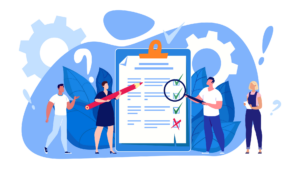The future of meaningful work is now. And this relies on driving change through fresher perspectives, technological innovations, new ways of working, and diverse voices. The idea is that work must feel meaningful to employees at all levels. Ultimately, those who feel their work has a purpose attached to it feel more content and perform efficiently.
The business landscape today is very different from what it was almost three graduation seasons ago. 2020 revamped workplaces. For better or worse, day by day, many things made it to 2022. What we thought was temporary shelter-in-place with temporary provisions seems to have no end.
The shift to a hybrid or remote working model is a prime example. So, those entering the workforce now have an altogether different viewpoint about the future or work.
Since the pandemic, there has been a paradigm shift in how we will continue to work and the meaning we need to keep moving forward. Many businesses are also adjusting their hiring processes to retain top talent and build robust teams.
What really distinguishes meaningfulness at work from other attitudes like satisfaction? Each perspective may be interlinked, but meaningfulness at work has a distinct definition.
The Meaning of Meaningfulness at Work
Meaningfulness primarily has to do with the kind of impact employees are creating. But the experience might not necessarily be positive; it is linked to something purposeful.
Meaningfulness at work is also associated with fleeting moments in peaks and troughs, not a continuous state. And in fact, meaningfulness doesn’t make itself known.
An employee won’t go home announcing they found the day’s work meaningful. Finally, another key difference is that meaningfulness is not just linked to the actual work but also to the link between the individual’s personal life and the job.
Finding and Losing Meaning
You might assume that only specific roles offer means to those undertaking them. This isn’t the case all the time. An overwhelming majority find and wish to see their work meaningful.
So, as entrepreneurs, you must involve employees in critical decision-making processes, acknowledge their participation, and not erode their sense of meaningful work.
Bad Management = Destroyed Meaningfulness
Good leaders can nurture a respectful work environment that helps individuals adopt authentic values, a positive attitude, and improved quality of life. But bad leaders can barely ignite a spark within the workforce.
So, management must understand and strategize to help all individuals find their own meaning in their work, making their job seem worthwhile.
Meaningful Work Trends with the Greatest Impact
Today’s workplace is far different from what it was a decade ago. Moreover, 2020 became a landmark year for tremendous changes. The following trends are setting a benchmark for the continually evolving and agile nature of work.
So, let’s take a look at the trends with the most significant impact on organizations as well as employee experiences adding to meaningful work opportunities:
Hybrid vs. Remote Working Model
New hires, particularly Gen Z, will be a wholly digital generation in the coming times. They will soon come to be known as a remote or hybrid generation.
Where the remote model necessitates no need for office visits, the hybrid mode is location-flexible, combining on- and off-site work. This brand new experience will change how employees and prospective candidates view workplaces.
The future of meaningful work is hybrid. Therefore, businesses, too, are shifting their priorities. What seemed like a week- or month-long arrangement then appears to be a continuous measure.
With giants like Hubspot, Slack, Microsoft, Dropbox, and Shopify introducing a permanent work-from-home trend, many employees now seek this significant benefit from any employer.
As an option, necessity, or benefit, remote/ hybrid policies are here to say. So, you must design work around employee flexibility to add meaning to their job. It is also a great way to maintain a more extensive workforce on a small budget, or you could risk losing much of your force in a back-to-office setup.
Talent Acquisition
There is a critical shortage of good talent. Leaders are pressured to fill roles with skills that meet the organization’s ever-evolving needs.
Without any doubt, attracting, assessing, employing, and retaining the best talent is serious business. So, broaden your strategies and provide employees social space, celebrate their abilities, and help them fulfill their passions and professional dreams.
Keep a human-centered approach towards acquiring capable people. Design roles keep a better future for both you and the individual. Make your story as inviting and compelling as possible, and you will attract a dynamic and driven workforce.
Employee Retention
Employers must focus on retaining employees. And a flexible and meaningful work culture adds to that.
According to this survey, almost 73% of millennial workers seek meaningful work and a mission to support. In fact, even veterans are interested in performing work that matters.
So because the workforce from all age groups seems to value work they can be proud of, employers must find ways to make the circumstances so, adding to the employee retention rate.
This multigenerational global study demonstrates that around 22% of millennials wish to help make a social impact, and so do 24% of baby boomers and 20% of Gen-X individuals.
Learning and Development
Offer continuous and ongoing programs to up-skill employee learning and development – that is a new way to work your way up. Whether you work remotely, in a hybrid model, or full-time, the future of work remains uncertain. So, to keep fighting in times of crisis will require a whole new range of aptitudes and knowledge, accelerating better growth opportunities.
Learning and development is an incredibly powerful employee retention tool. Re-skilling employees for newer possibilities is the only way forward.
You may have to invest resources in their success, but you also reap long-term benefits. Besides, you can save on employee turnover and retain your best talent for a long time.
So wait no more, and put your “I will find you, and I will make you complete your training” hat on. Not only should you access your employees’ existing expertise but also invest in up-skilling and re-skilling their capabilities simultaneously.
DEI Initiatives
Companies prioritizing DEI or Diversity, Equity, and Inclusion benefits are seeing a surge in employee retention rate. The scenario is becoming more appealing to attract a diverse workforce. Hybrid or remote work is another significant advantage for employee productivity.
But the consequences can also get worse, remote work doesn’t guarantee equitability, and your preconceptions can land you in trouble. So you must mitigate your biases to support the right talent and help them leverage flexible work benefits.
Actively advocate and value DEI, not for the sake of it but in reality and over your fears. Keep diversity and inclusion-related conversations real and practical. In the case where differences arise, be open to finding solutions. Don’t forget to take inventory of your personal preferences and work against those to support equity and inclusion.
Also, create a safe, supportive, accountable, and flexible work culture. Implementing DEI policies demands more awareness, courage, and thoughtfulness than an average leader. It keeps people who have been misrepresented, underserved, or kept away from positions of power to benefit in a natural and thriving working ecosystem.
Ultimately, the more diversity your company has, the more favorable your impact is on overall company performance and profits.
Well-Being Is a Key Metric
As much as remote working adds to increased employee productivity, the focus on flexible working for enhanced well-being is yet another welcoming change. More and more employers are looking to invest in employee well-being to attract, employ, and retain credible talent.
Undeniably, employee burnout is at an all-time high. More than 75% of employees across all professionals experience chronic work stress impacting their mental well-being. Furthermore, return to work policies are increasing stress levels for many.
So you, too, must look for strategies to stave-off employee departures and keep workplace stress in check.
Final Words
Your “people” are your most valuable asset, your most significant resource, and bring knowledge, experience, and abilities to the table for the success of your business. Entrepreneurs and executives who value their people and demonstrate meaningful work opportunities attract candidates with the highest caliber.
Entrepreneurs and executives who value their people and demonstrate meaningful work opportunities attract candidates with the highest caliber.Click To TweetYou must keep reevaluating your processes to empower and allow people to pursue their passions and purposes both at professional and personal levels.







